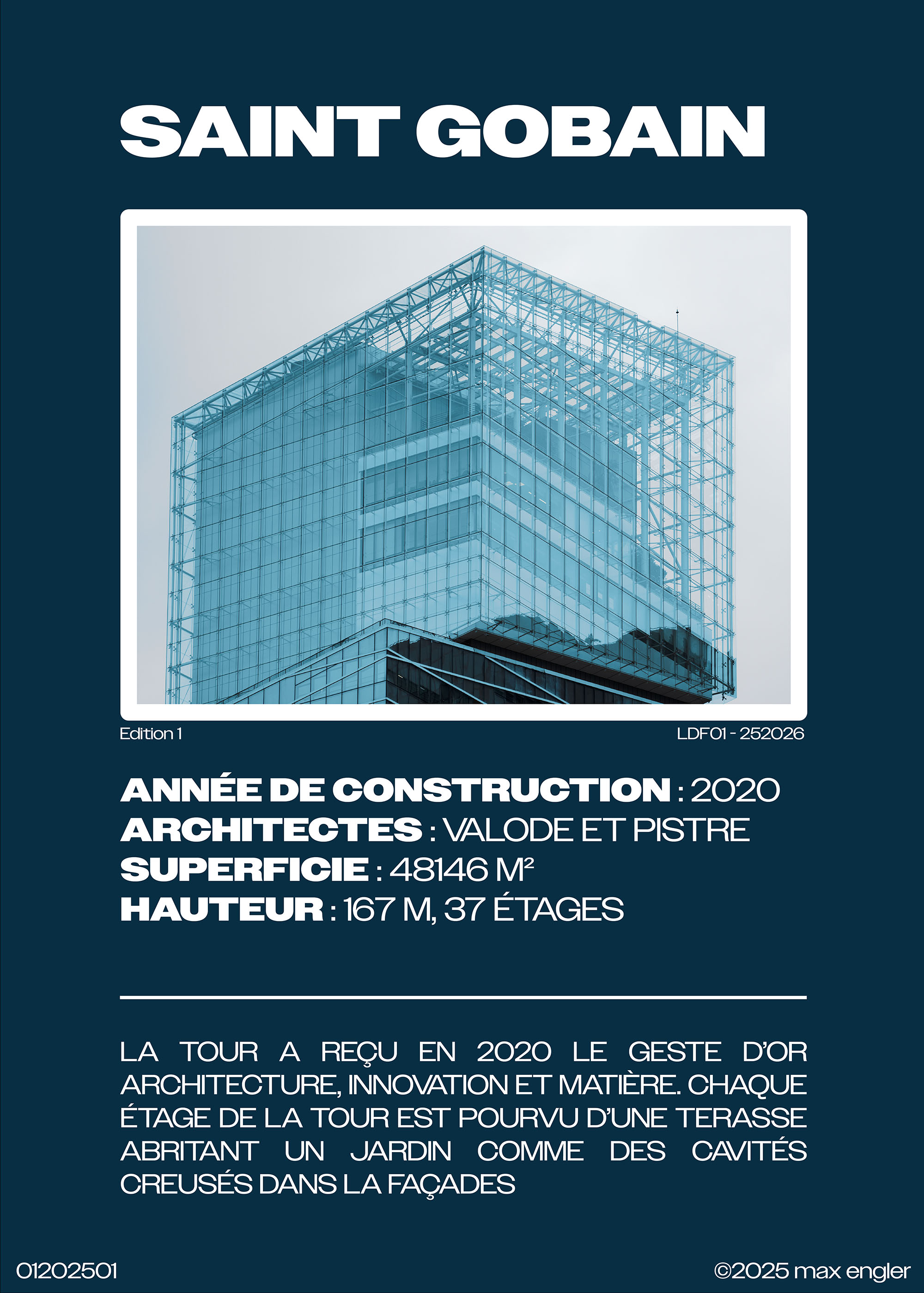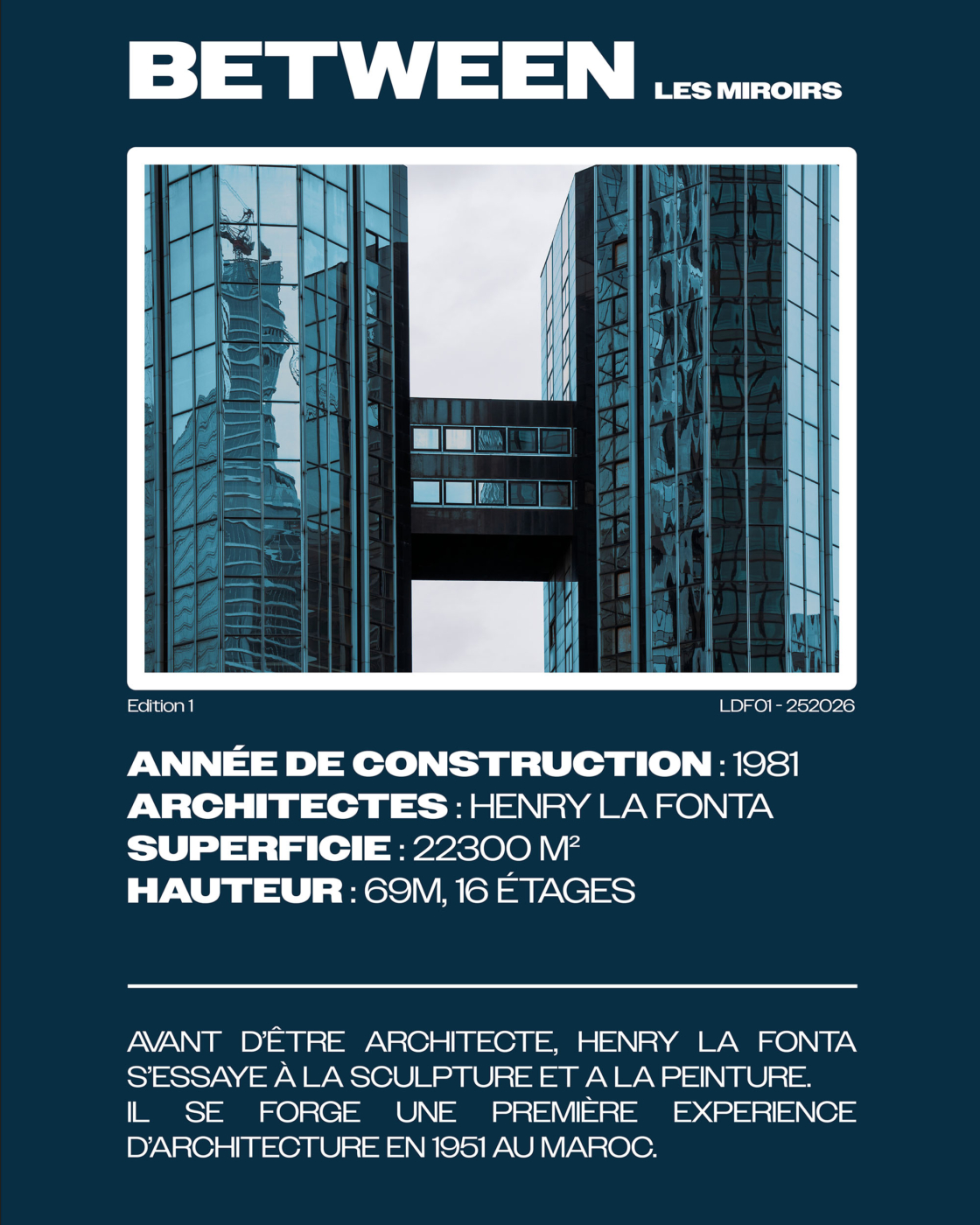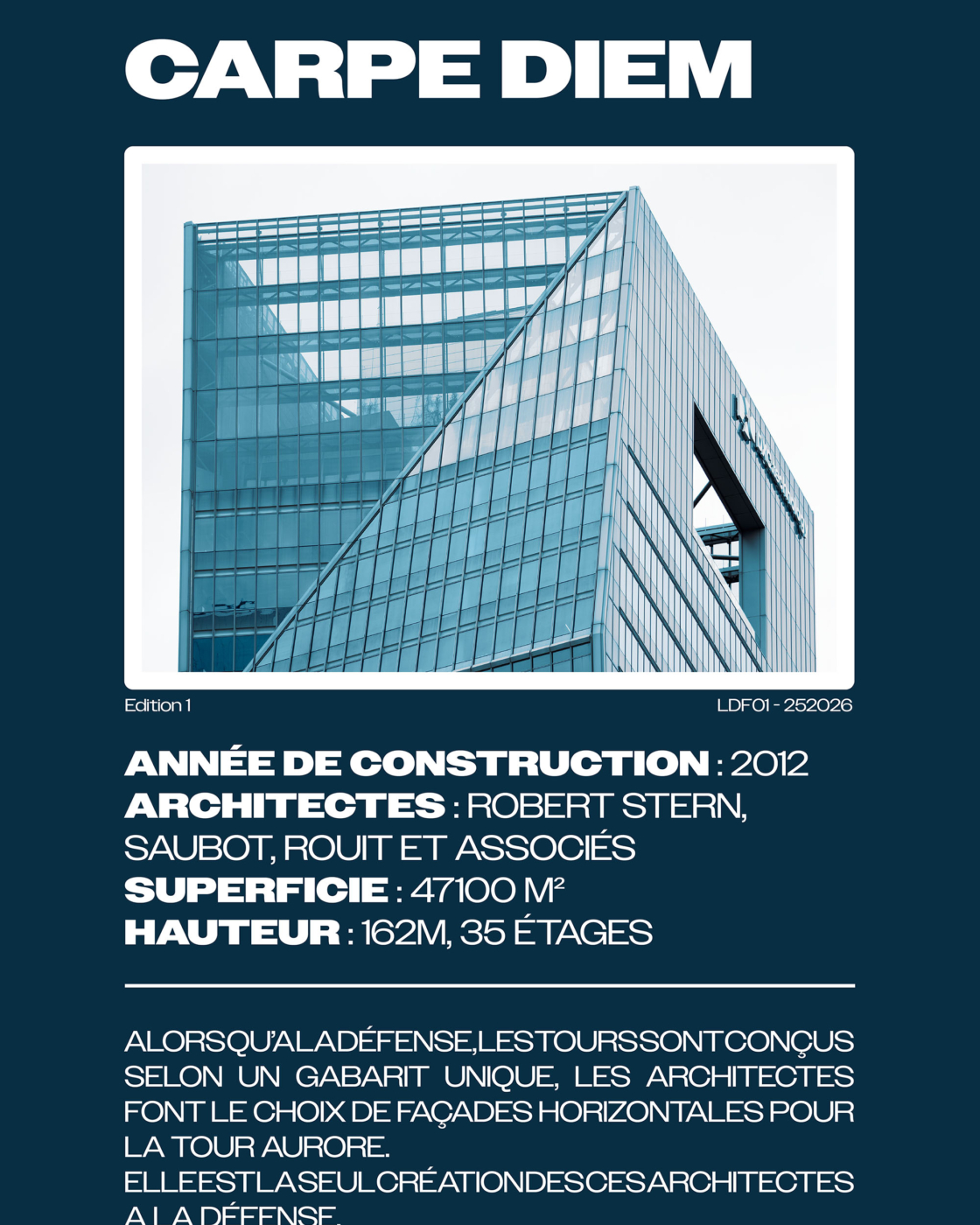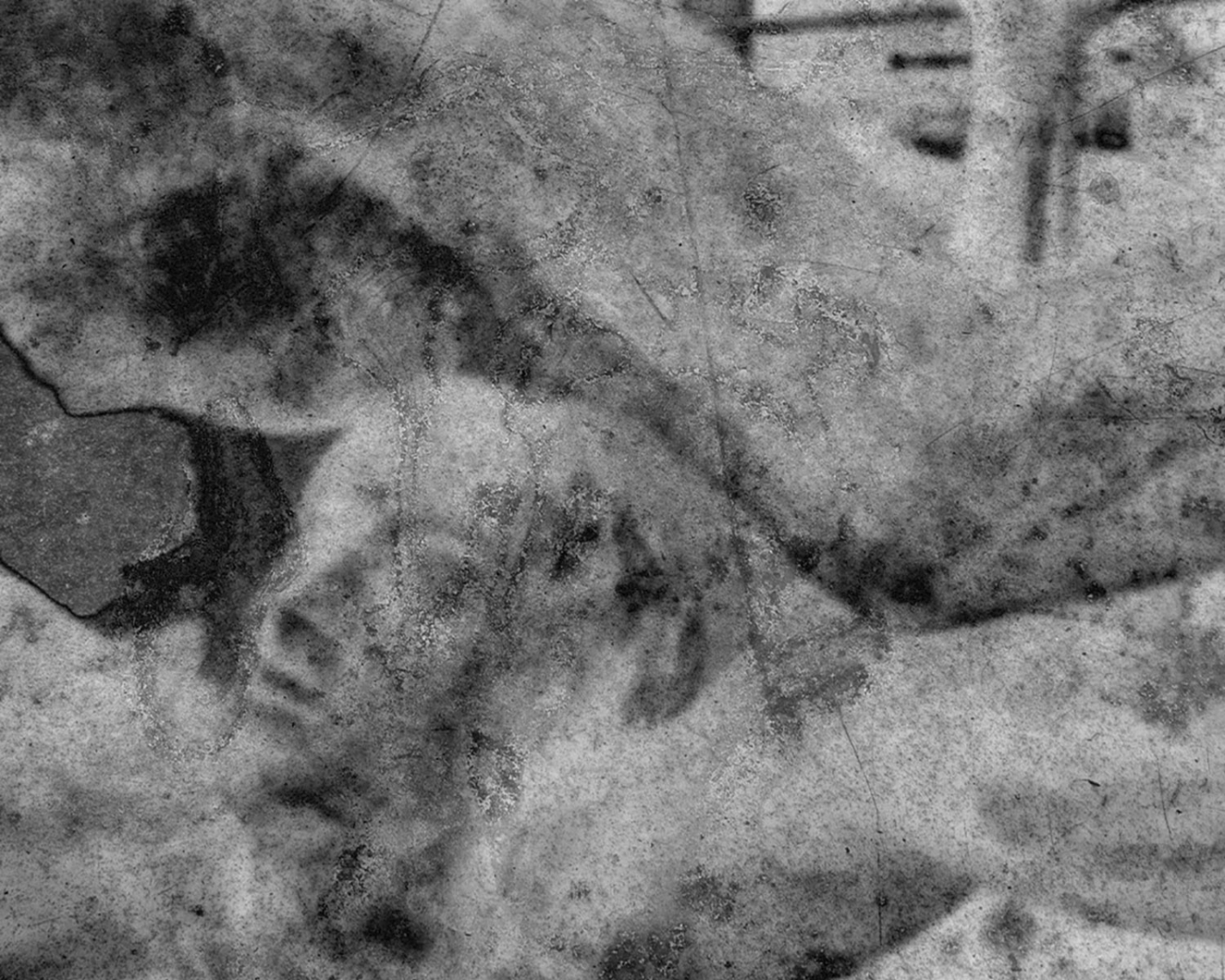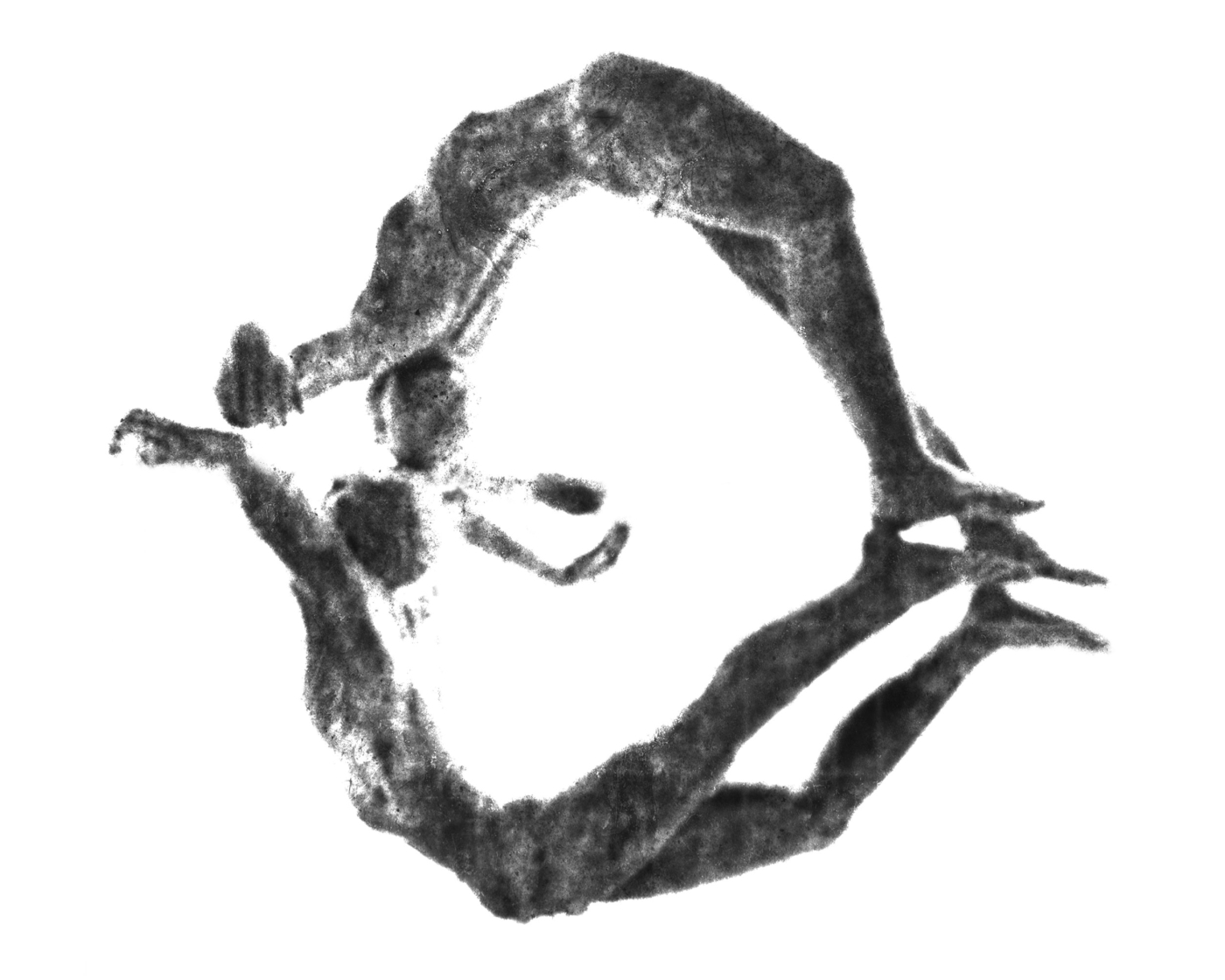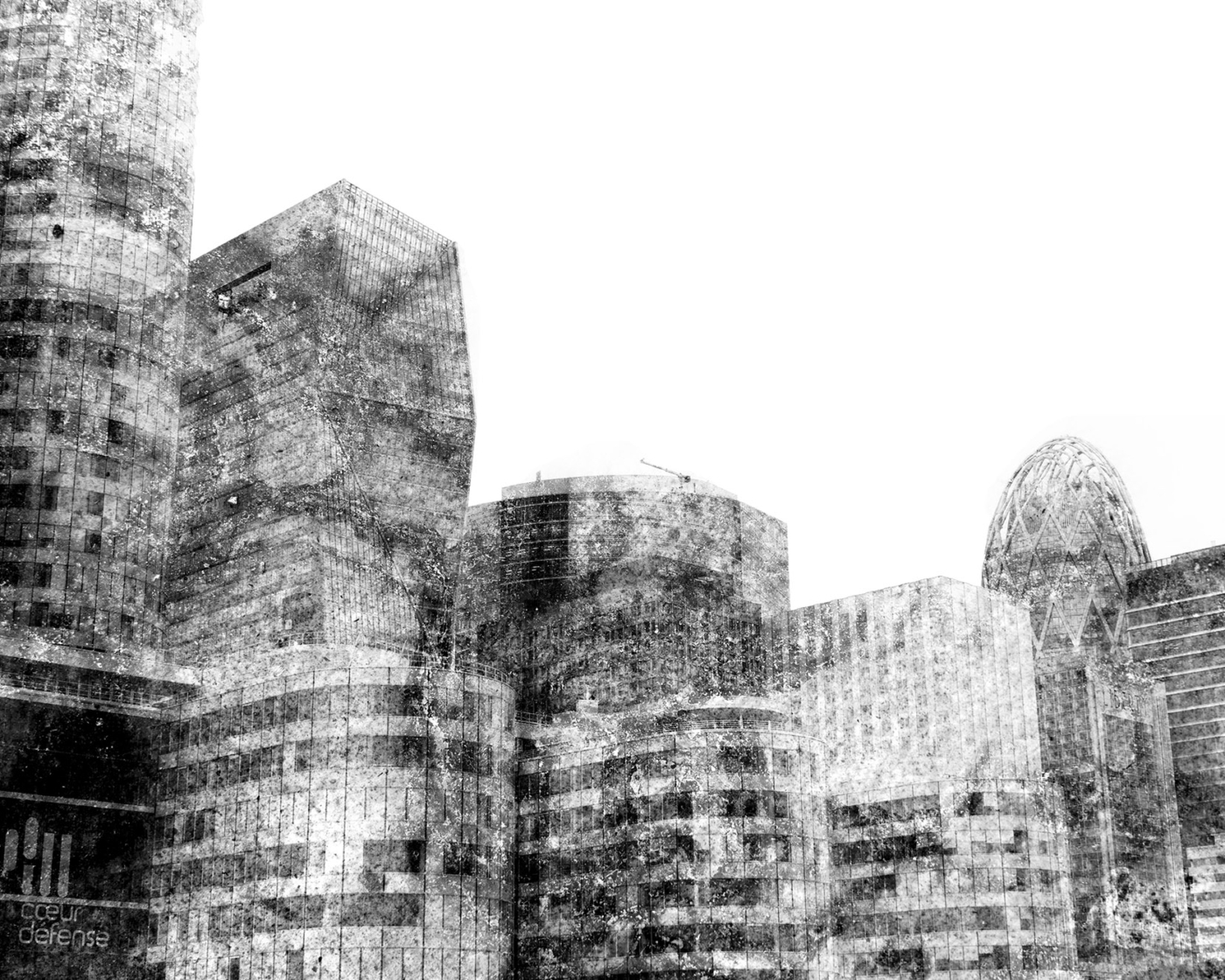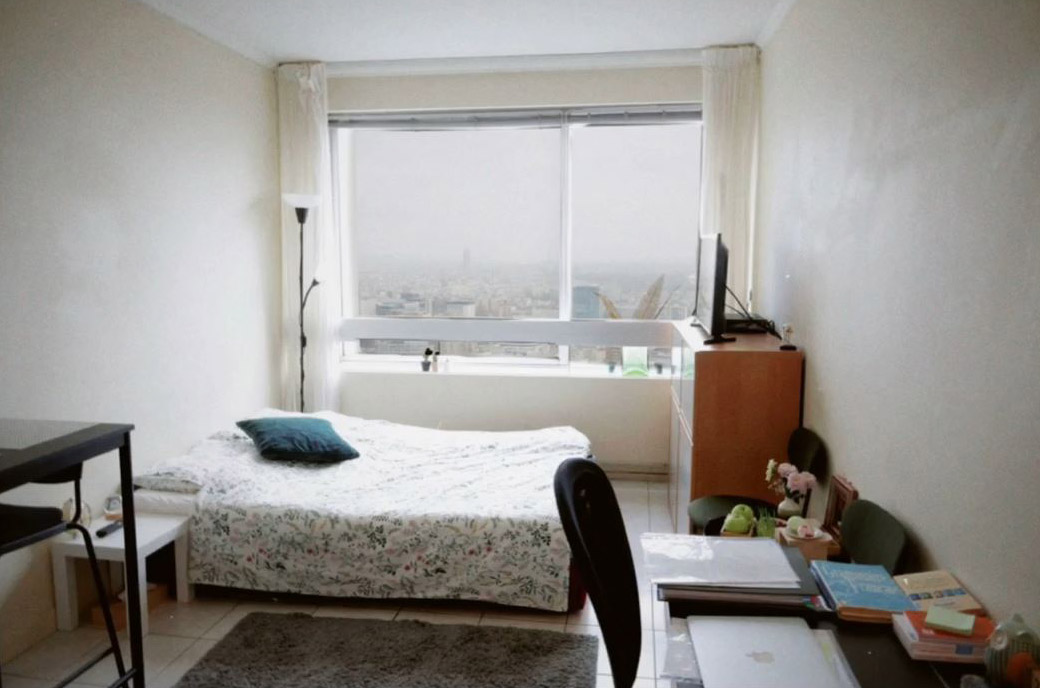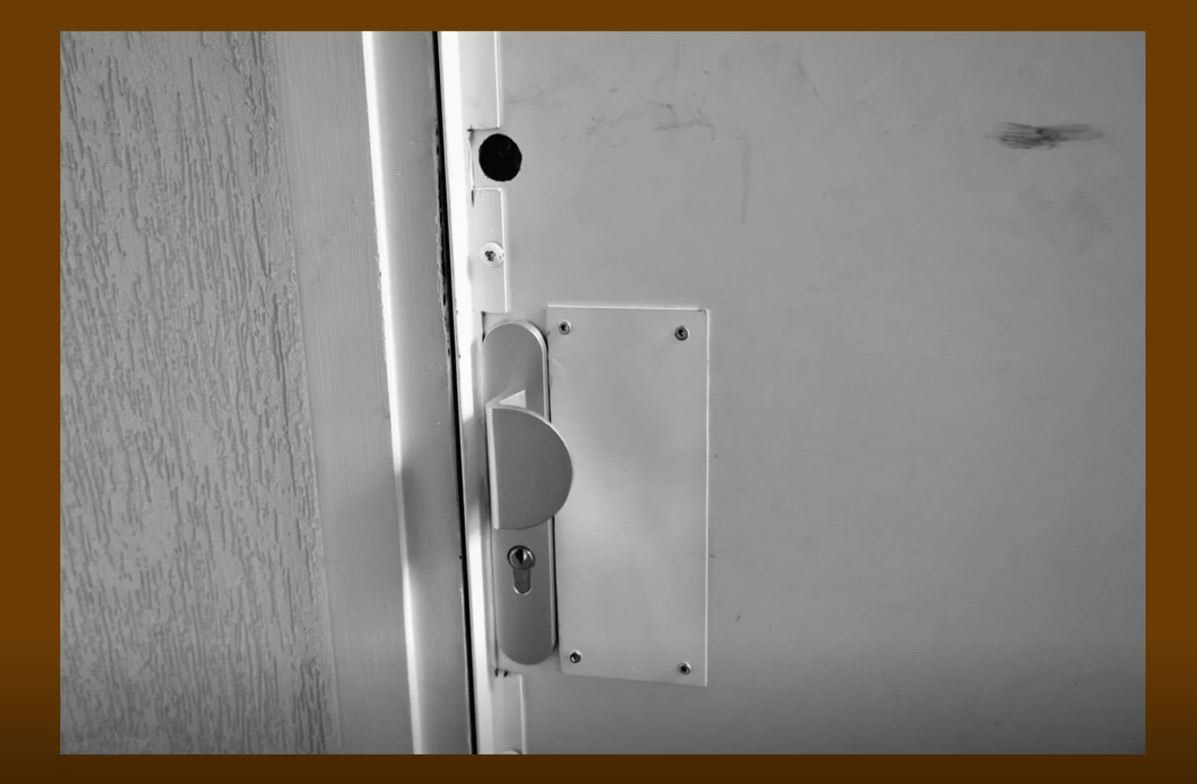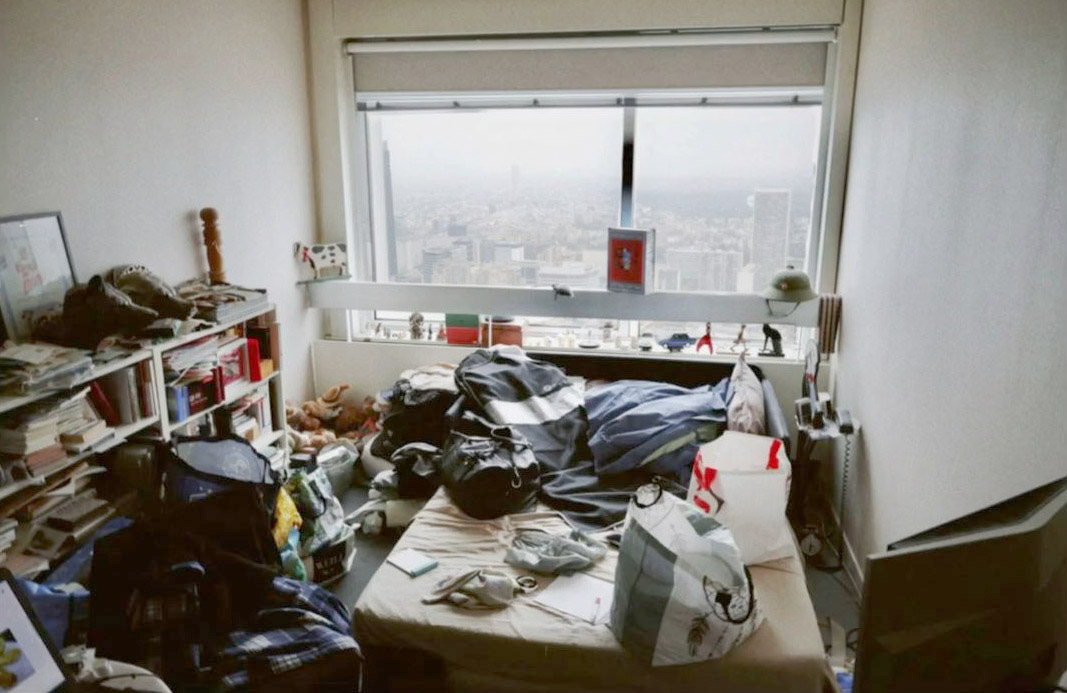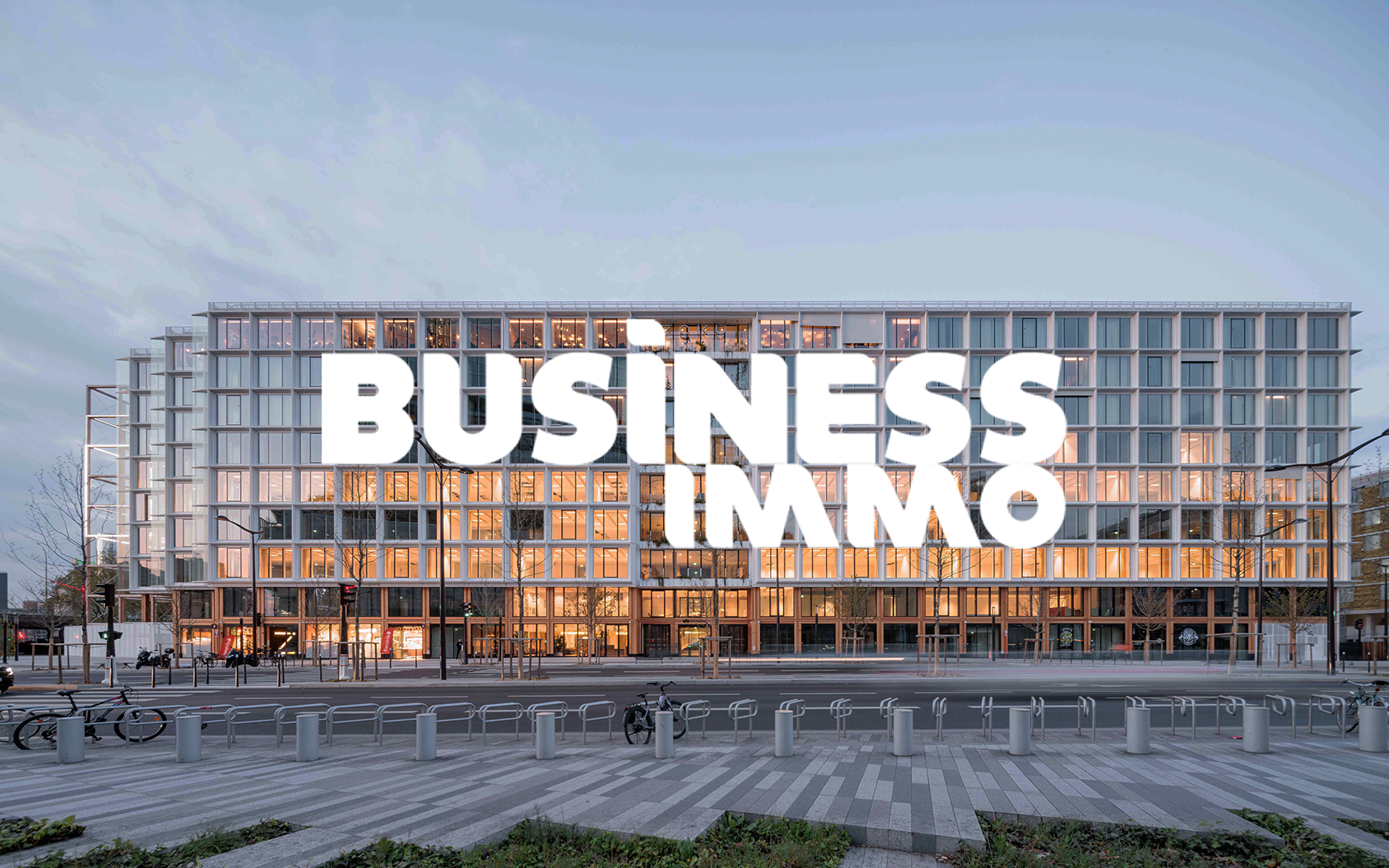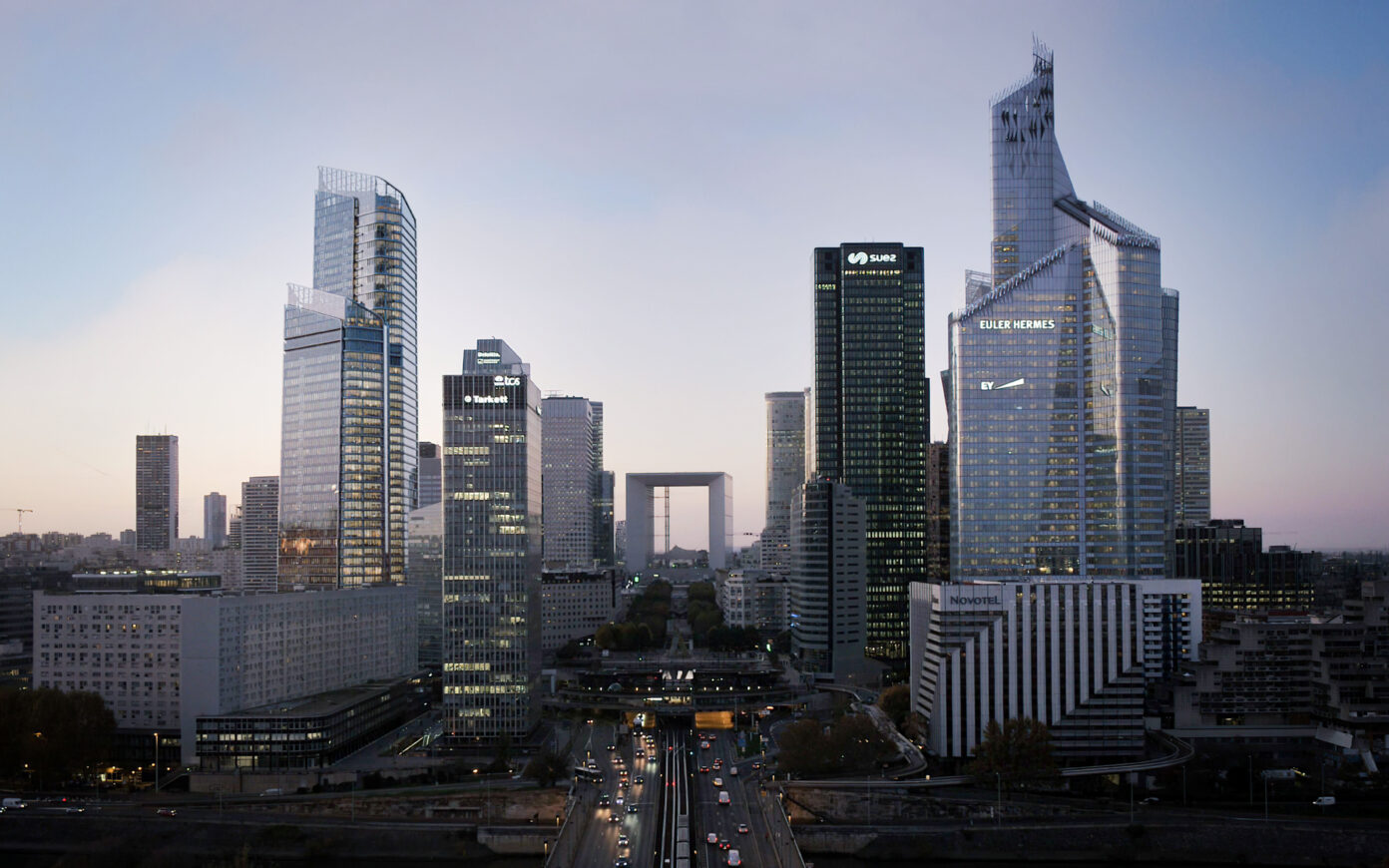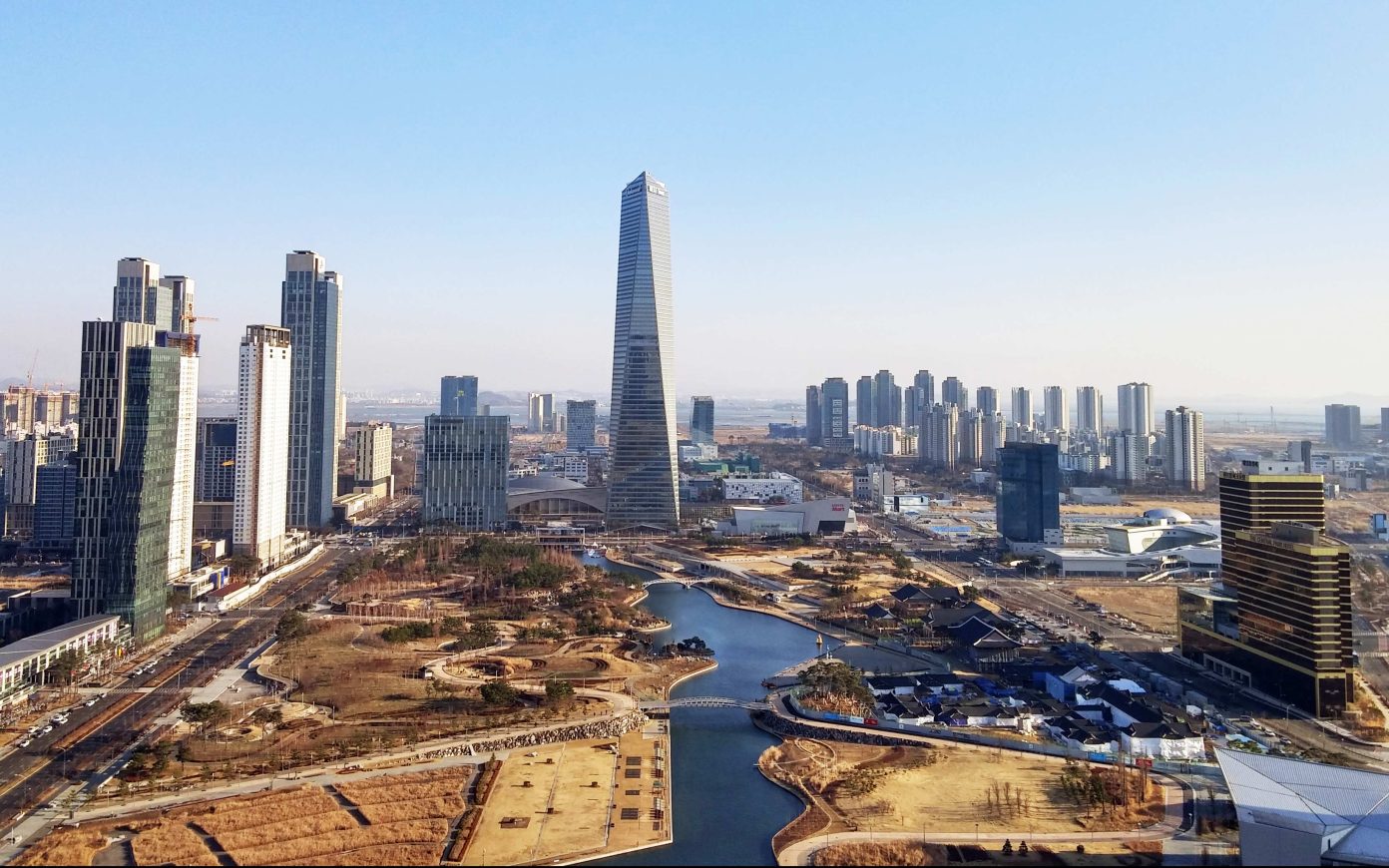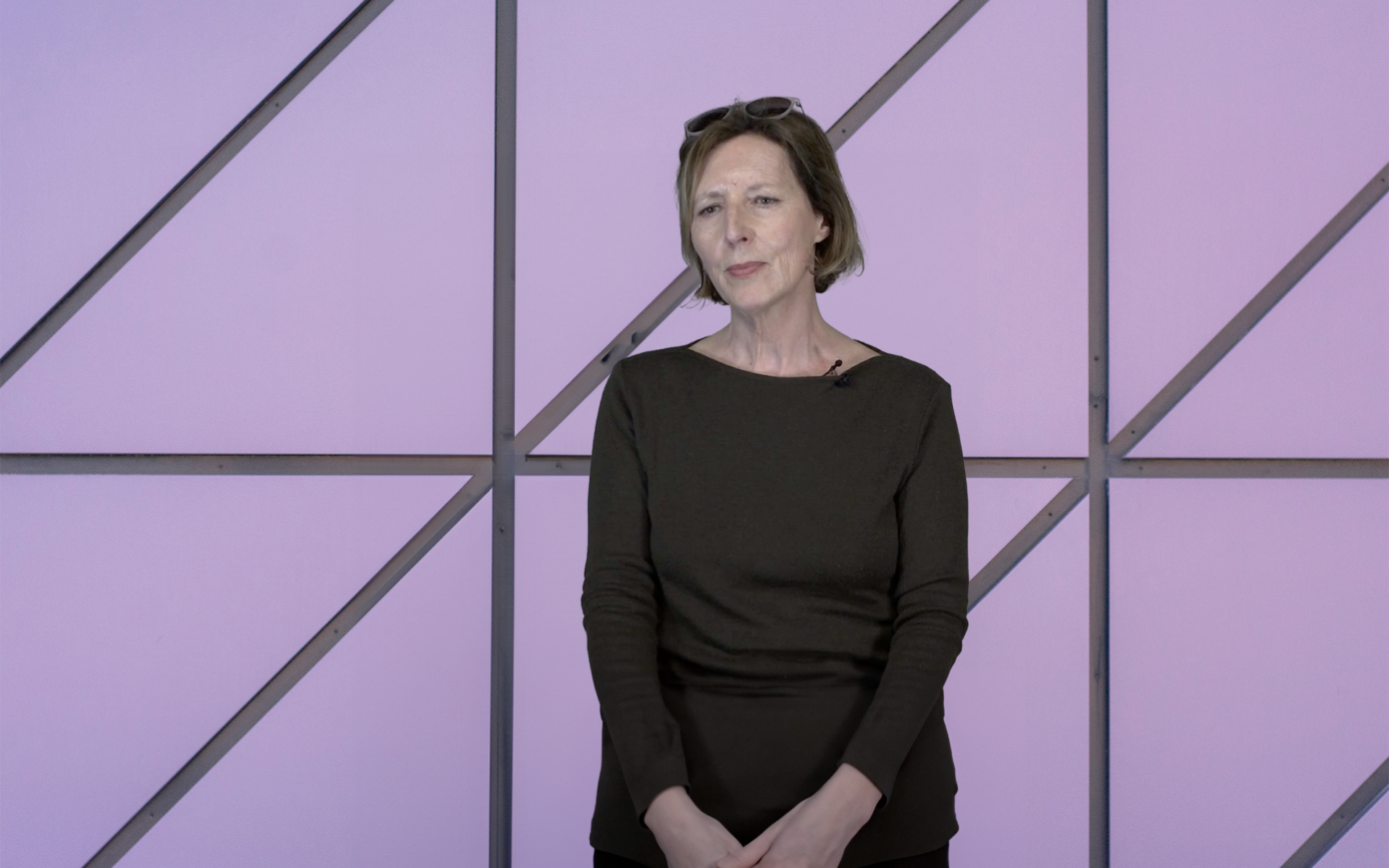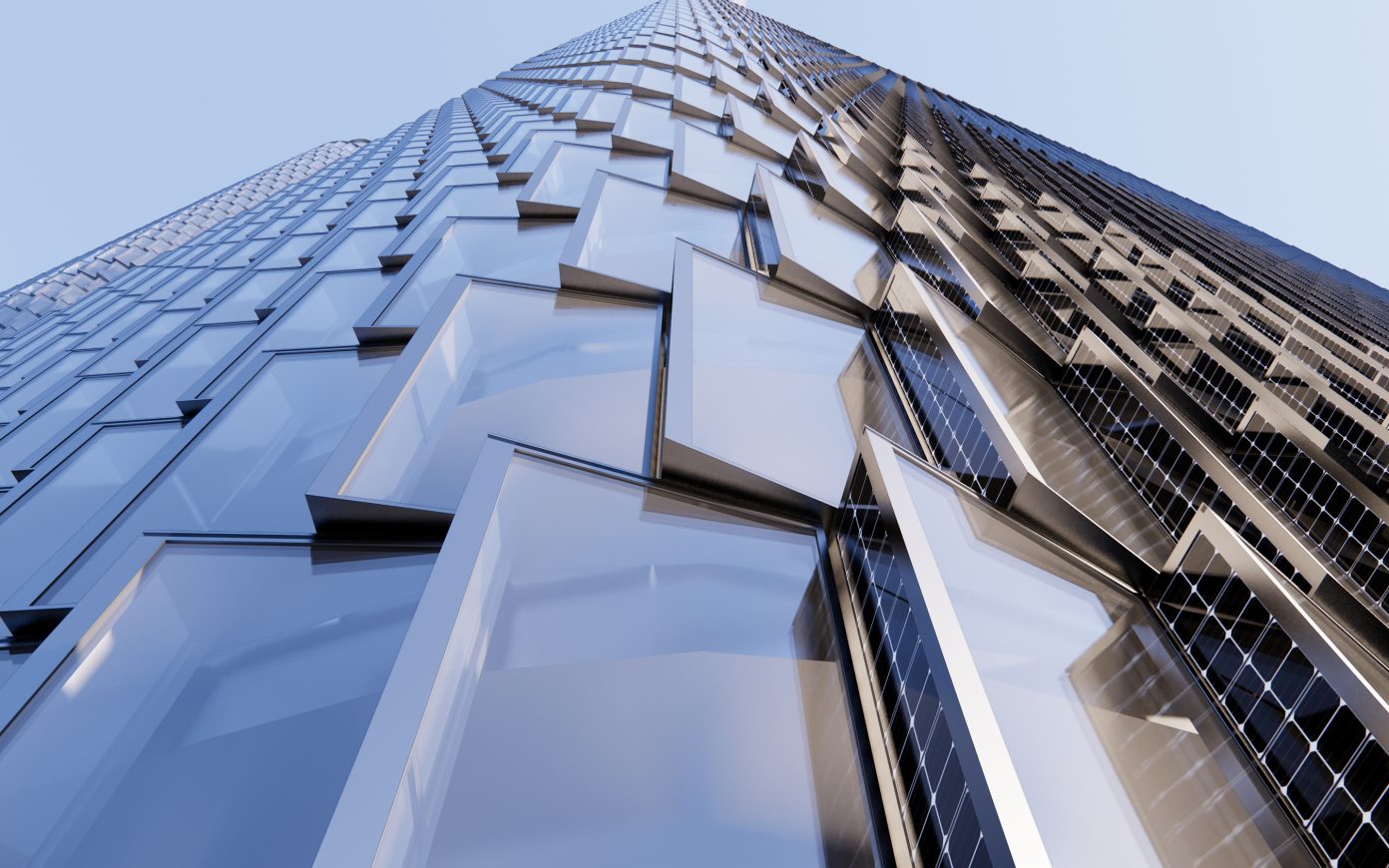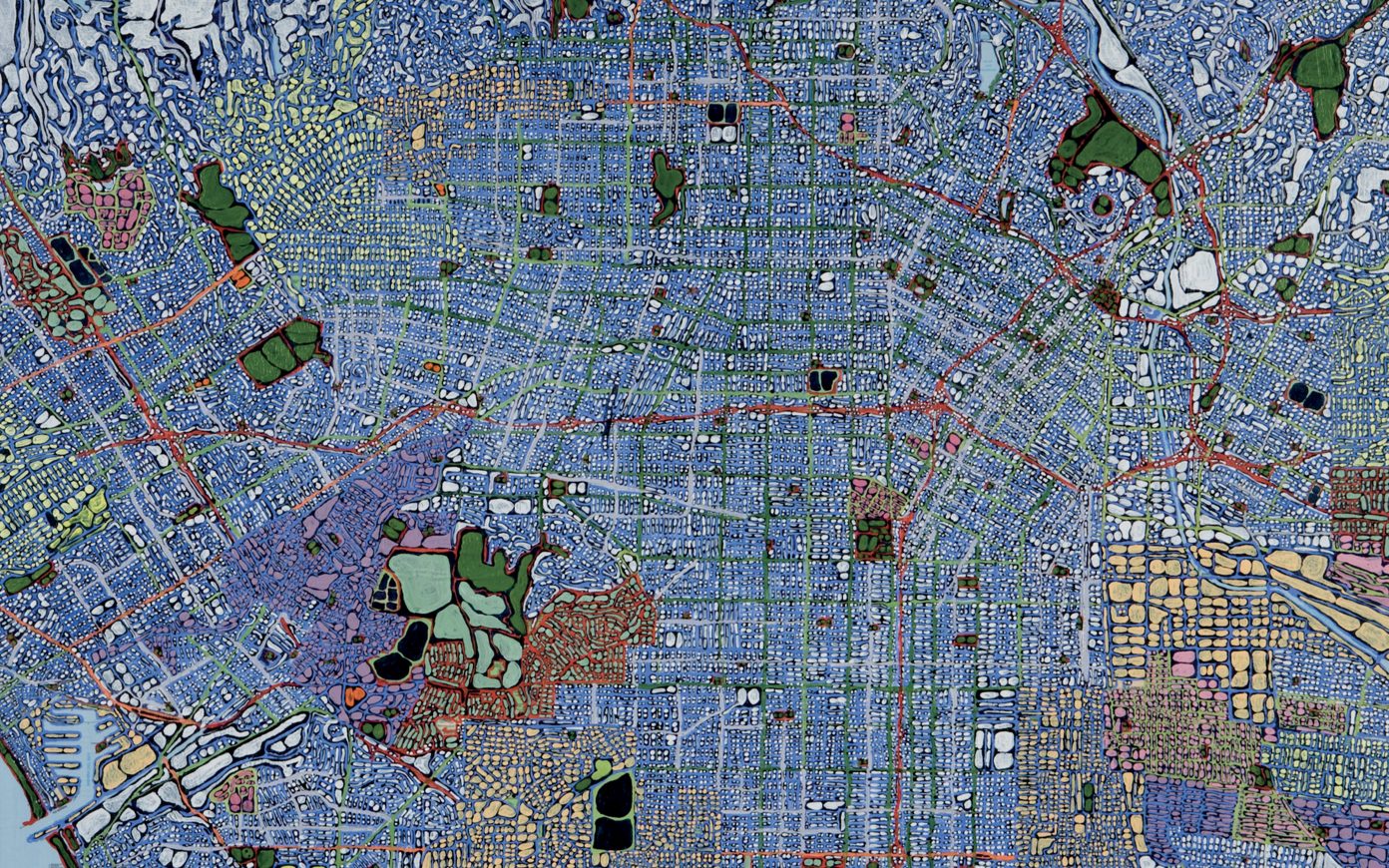Capturing the Cityscape Through Photography

- Publish On 5 September 2025
- Émilie d'Orgeix, Corinne Feïss-Jehel, Pierre-Jérôme Jehel
- 10 minutes
Over the span of several months, students from GOBELINS Paris scouted La Défense, examining the iconic business district from the fresh perspective of urban metabolism. As part of a documentary workshop led by Pierre-Jérôme Jehel and Laetitia Guillemin (GOBELINS) and designed in partnership with researchers from the City-Metabolism Chair at PSL University, some thirty students explored this territory. They did so by treating it not as a mere backdrop but as a living organism, traversed by flows, tensions, and rhythms, using photography as a tool for revelation. Their projects, located at the crossroads of artistic creation and research, unveil an alternative reading of this mineral space, between invisible flows and underlying tensions. Both sensitive and rigorous, this inquiry is chronicled here by Corinne Feïss Jehel (EPHE-PSL), Pierre-Jérôme Jehel, and Émilie d’Orgeix (EPHE-PSL) as part of a research project conducted by the City-Metabolism Chair (which is financially supported by PCA-STREAM, Artelia, and Groupama Immobilier).
Reconfiguring La Défense as a Place of Narratives
La Défense—a business district that was planned ex nihilo and an emblem of French modernity—forms a quasi-insular setting that is particularly conducive to experimentation. As such, it constitutes a unique laboratory for uncovering the metabolisms at work within.
The students’ photographs provide both a “sensory mapping” of the urban territory and representations of urban metabolism. Permeated with human narratives and the singularity of individuals swept up into a world in motion, La Défense’s urban space registers a moment of lived time, a snapshot within the urban flow. The modus operandi and modus vivendi are perceived here concurrently. The challenge was thus to find ways to juxtapose concept and perceived/lived experience, between the city of La Défense and the daily life within it, positioning the human as the source of both form and image. In other words, the goal was to reveal La Défense’s sensory and imagined realms: not only to uncover the often unfathomed lived and perceived experience of those who navigate the district, but also to identify indicators of these emotional movements.
The CBD’s distinctive urban character, often perceived as a cold incarnation of modernism and a space of functional anonymity, is thus reconfigured as a place of narrative, re-scaled to the level of human singularity. It was approached as a living organism, permeated by narratives, buried memories, and sensory experiences—a catalyst for imagination. Accordingly, photography was employed not as a tool for illustration, but rather as a vehicle for revelation, fiction, and interpretation. It enables the activation of a latent reading of the territory by capturing interstices, invisible flows, diverted uses, individual trajectories, and fleeting emotions. The pictures do not depict; they instigate, engage, and interpret. They become a form of urban writing and a mode of inquiry into both forms of life and forms of space.
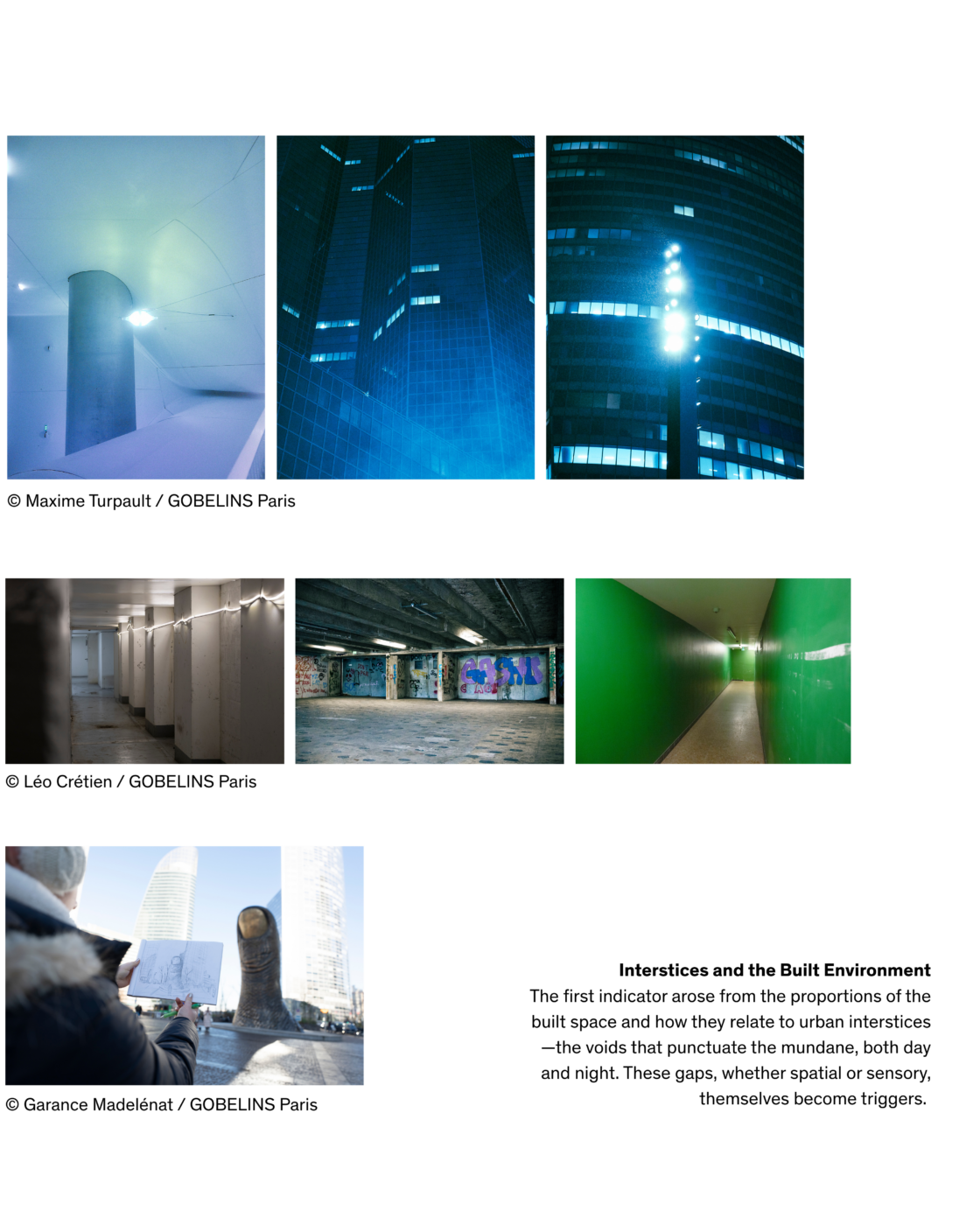
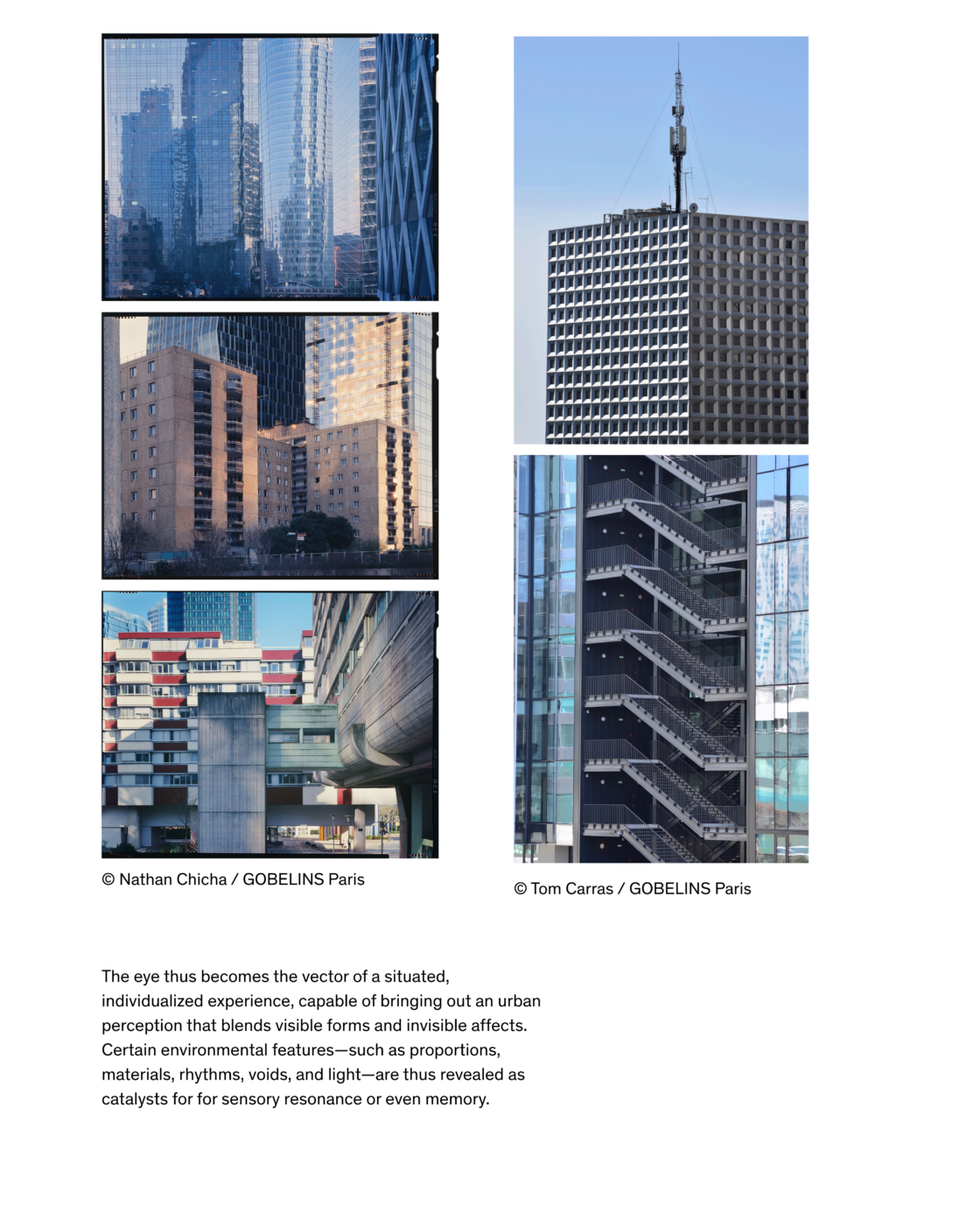
The Image-Space as a Field of Action
From the very beginning, this dialogue between the city and its photographic imagery has informed artistic thought and research. Walter Benjamin forged his concept of bildraum in the 1920s while roaming through Paris, Marseille, or Berlin. He argued that this “image-space” is not merely a representation, but a space to be discovered within the city. Urban space has thus provided photographers (when operating within the reportage approach) with a vast terrain for modern creation. It is marked by both the French “humanist photography” movement and American street photography.
The approach undertaken here nevertheless aims to expand the photographic gaze towards a more reflexive, even conceptual, methodology. In the 1960s, artists such as Edward Ruscha turned the city into a place for both visual and mental experimentation. Photography became a means of plastic and documentary investigation, the resulting pictures being conceived as actions in themselves. The practice of urban walks developed as a result, notably with Guy Debord’s “situationist mapping” and his exploratory “drifts” (dérives) through Paris (see his Guide Psychogéographique de Paris [Psychogeographic Guide to Paris], 1957). To this day, the principle of urban traversals—designed to foster a deepened perception of the city (and further expanded upon by Francesco Careri through his “walkscapes”)—continues to inspire new ways of perceiving the urban environment.
The photographic experimentation at La Défense derives its theoretical foundation from the work of Henri Lefebvre, Bruno Latour, and Sabine Barles. As early as 1974, in The Production of Space (1974), Henri Lefebvre was already calling for a sensitive yet critical reading of urban space, one attuned to lived practices. Bruno Latour, in his work Reassembling the Social (2005), proposed conceiving of the city as a network of human and non-human actors, a weaving of material and symbolic interactions. Finally, Sabine Barles, in L’urbanisme circulaire (Circular Urbanism, 2019), advocates for considering the city as a system of metabolic flows—of materials, energy, and information.
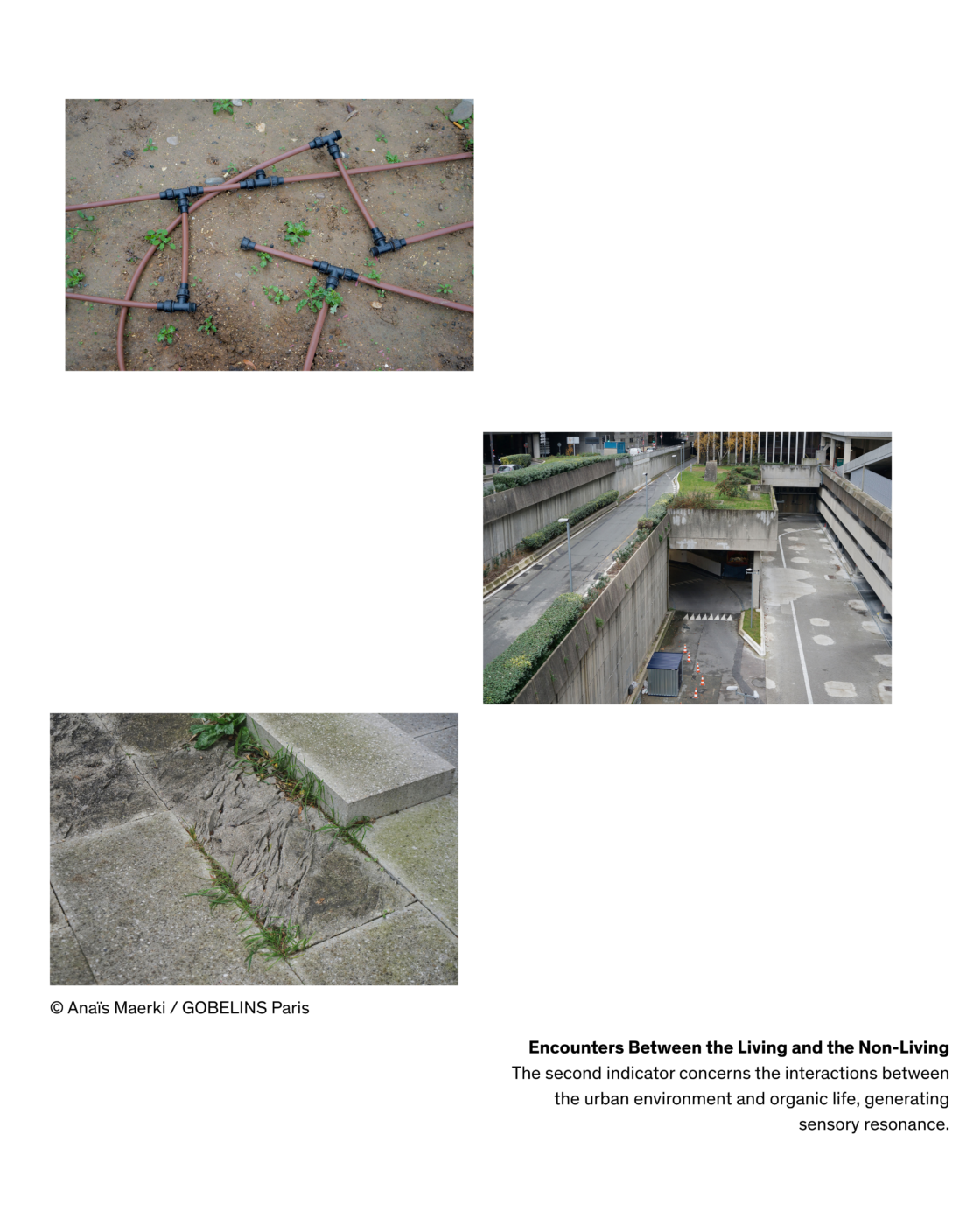
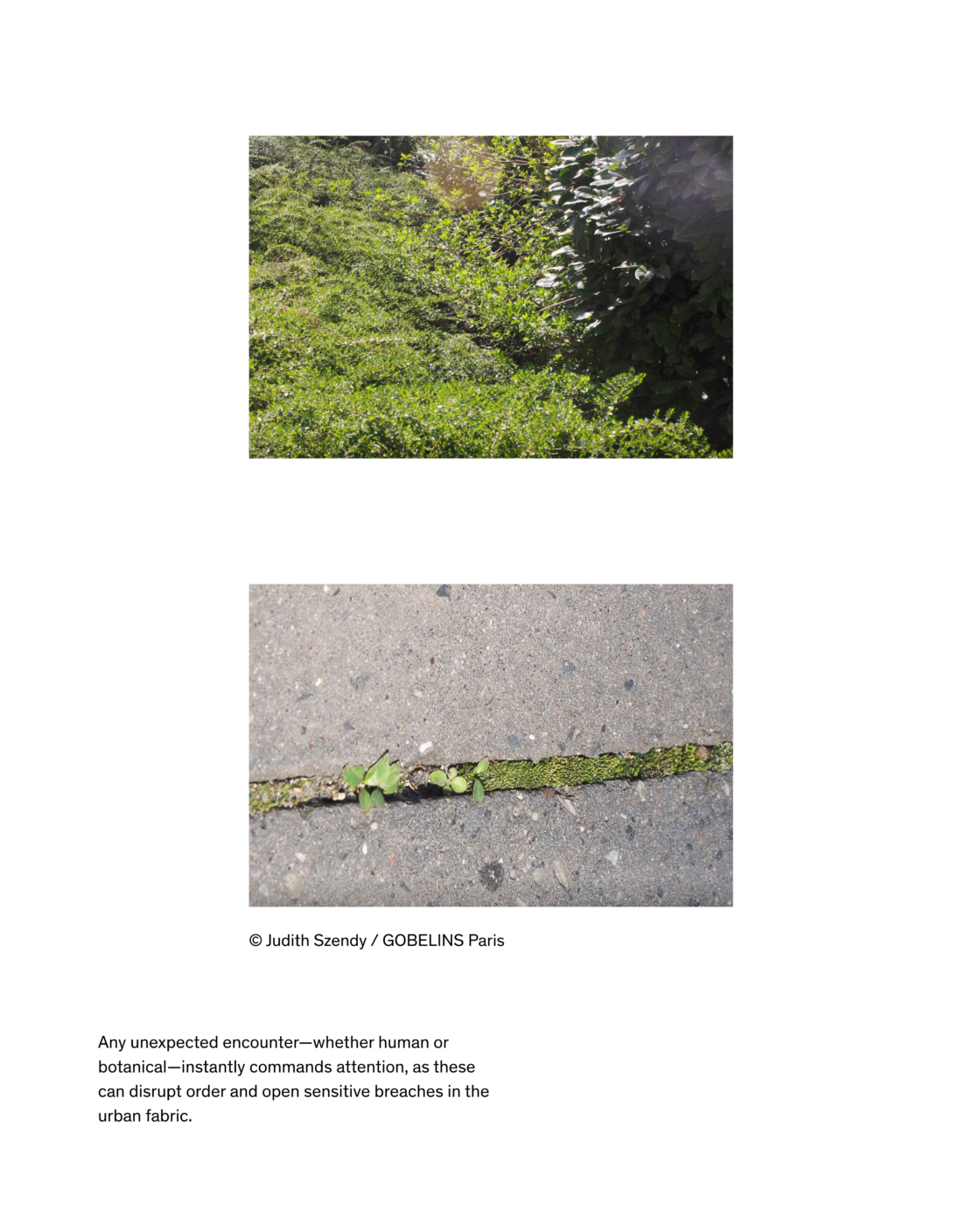
Five Convergent Lenses Forming an Interpretive Grid of Urban Metabolism
The photographic space thus engages a reflection into the nexus of concept and lived experience, of urban forms and forms of life. Here, humans are subjects traversing space, agents in an urban narrative that both shapes and transcends them. Consequently, photography becomes a tool for territorial interpretation. The photographic series both bring together and intersect lived experience, imagination, memory, and sensory explorations.
This approach yielded various indicators of urban metabolism:
- Interstices and the built environment—proportions and vacant, overlooked, or neglected spaces that elude formal planning and host unexpected uses and marginal presences.
- Encounters between the living and the non-living—hybridizations, frictions, or ruptures between the built environment and plant life, between the organic and the mineral.
- Flows and circulations in motion—materials, energy, sounds, light, but also the moving bodies and affects.
- Singularity/individual space—daily practices, ways of dwelling in and navigating through urban space.
- Temporal overlays—historical strata, past or imagined uses, archived or dreamed traces, all of which coexist within the same space.
Together, these five convergent lenses form an interpretive grid for understanding metabolism, revealing within the urban fabric its weak signals, sensory clues, and points of emergence of the living world within the urban context. They render visible the daily experience, silences, margins, and misalignments that often escape the planner’s gaze. Each lens acts as an indicator that reveals a snapshot of metabolic complexity, unveiling human and non-human artifacts within a subjective visual composition. Through this process, metabolism gradually emerges as a convergent space—a place where technical, human, and natural forms of life intertwine, sometimes dissonantly.
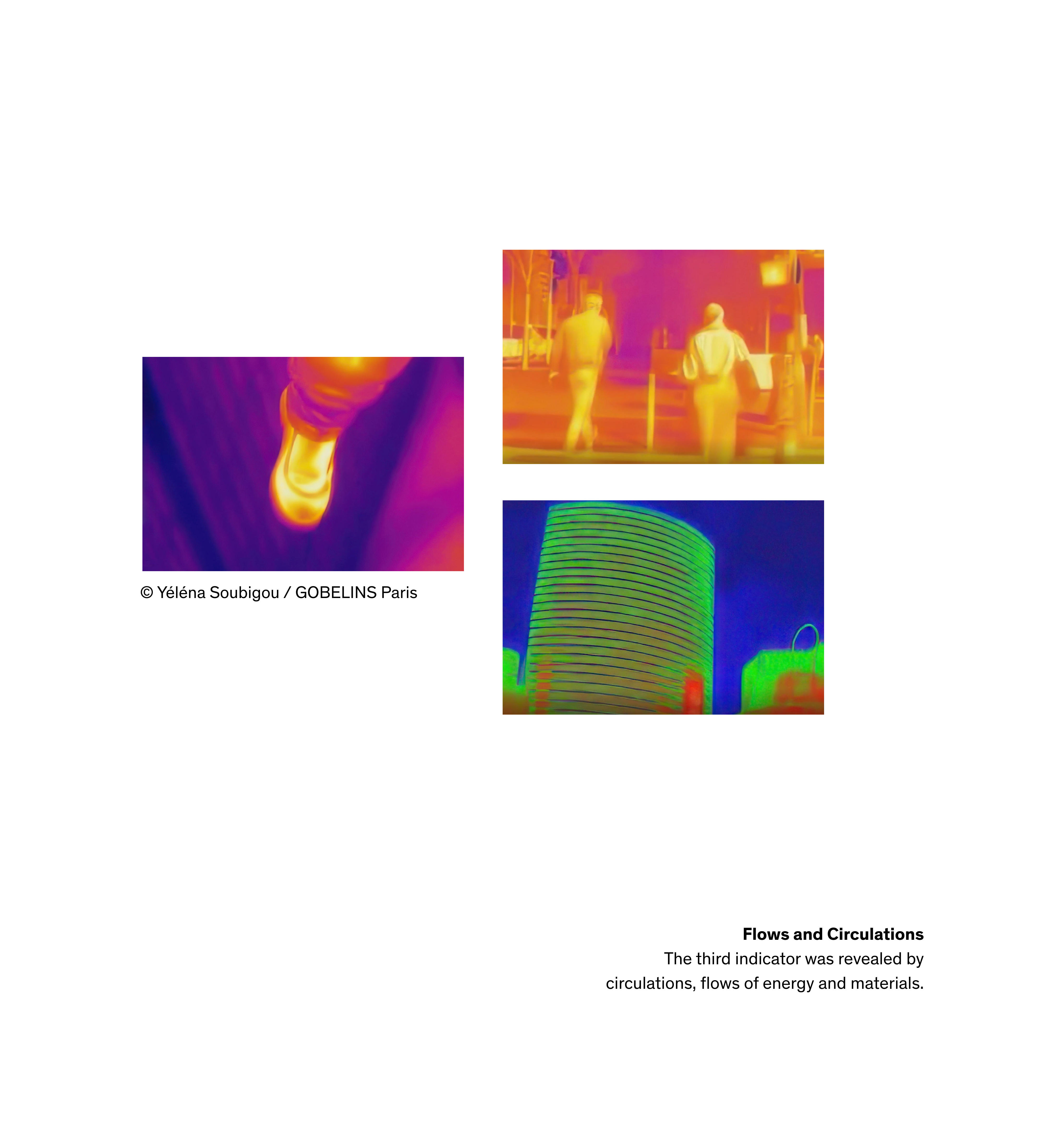
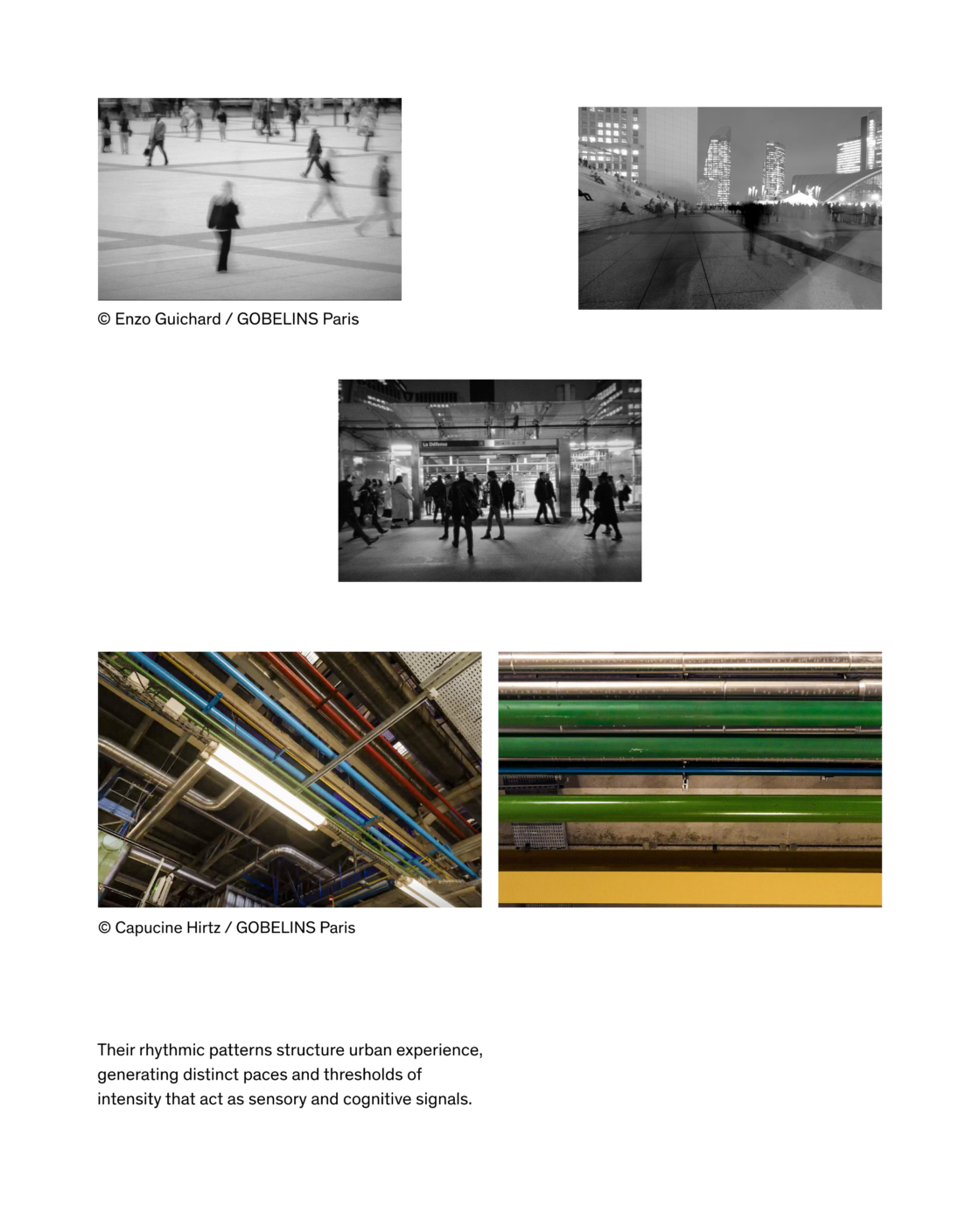
Photography: A Source Material Capable of Capturing the Infra-Ordinary Within Daily Life
The corpus kaleidoscopically archives the traces of its interferences, capturing bodies in motion, superimposed temporalities, ordinary uses, emotional wastelands, and unstable thresholds. It offers a view into—and a feeling for—the multiple layers of the visible and the invisible, the ordinary and the extraordinary, that make up the urban experience. It deconstructs the monolithic image associated with La Défense—a symbol of functional urbanism and technocratic verticality—to reveal its multiple strata, invisible porosities, and silent contrasts.
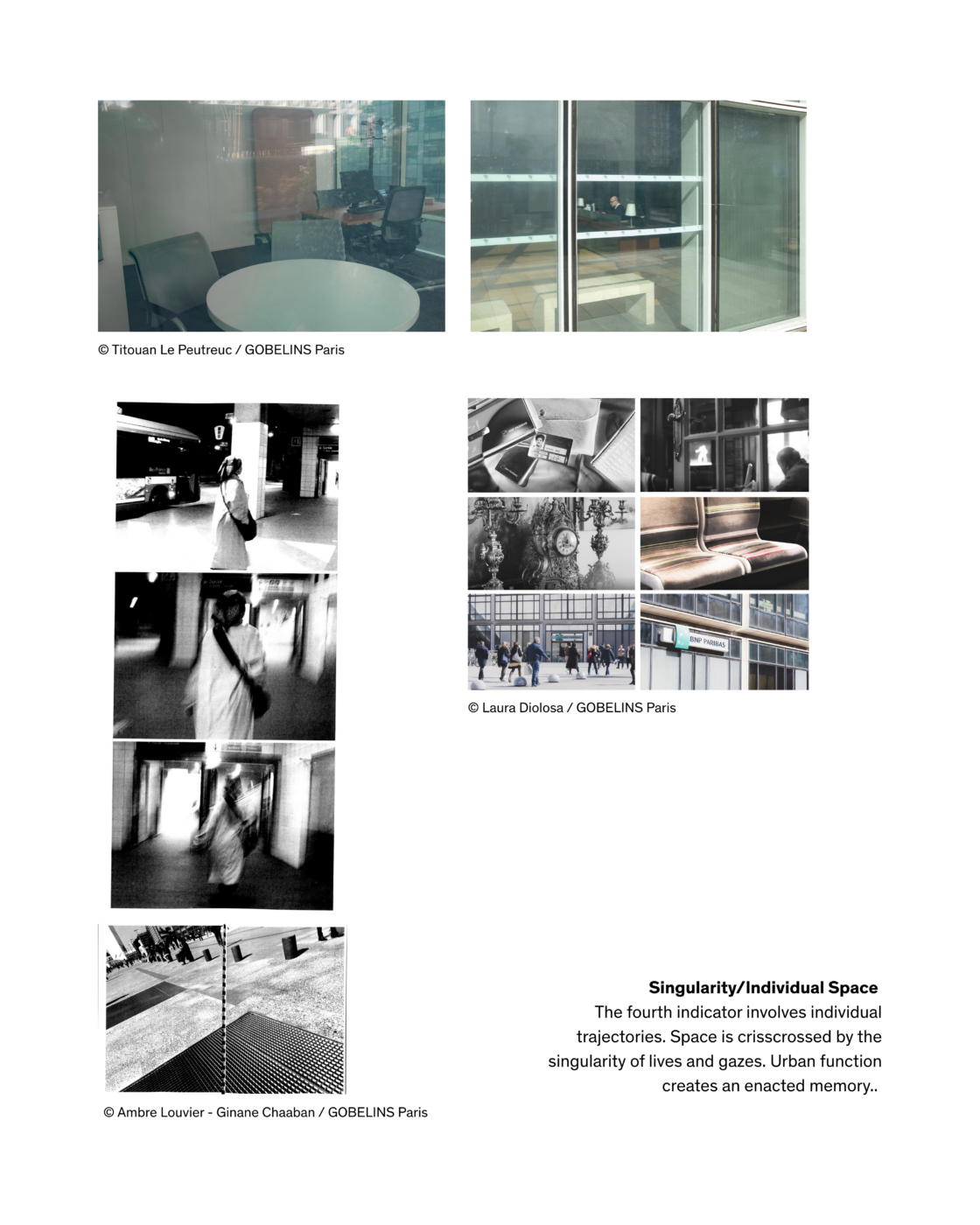

Each photographic series reveals an experience, an “otherwise,” an otherness of space, by unveiling atmospheres, frictions, diverted uses, figments of memory, or tenuous signs of appropriation. Far removed from an academic or strictly analytical approach, these perspectives embrace an openly assumed subjectivity. The absence of a disciplinary framework and pre-existing concepts gives full rein to a direct perception of the field, mediated by the imaginary, affect, and an acute attention to detail. This situated and embodied gaze is a form of “artistic surveying” akin to what Georges Perec termed an “oblique glance”—a shifted viewpoint capable of capturing the infra-ordinary within daily life, the tiny misalignments that reveal a place’s hidden truths.
These new research outputs establish an emerging and replicable research framework. Merleau-Ponty wrote regarding space and its perception that it is “reckoned starting from me as the null point or degree zero of spatiality. I do not see it according to its exterior envelope; I live it from the inside; I am immersed in it.” (Merleau-Ponty, 1964: 178). The photographic experience here is simultaneous in the same way as the place that is seen and looked at.
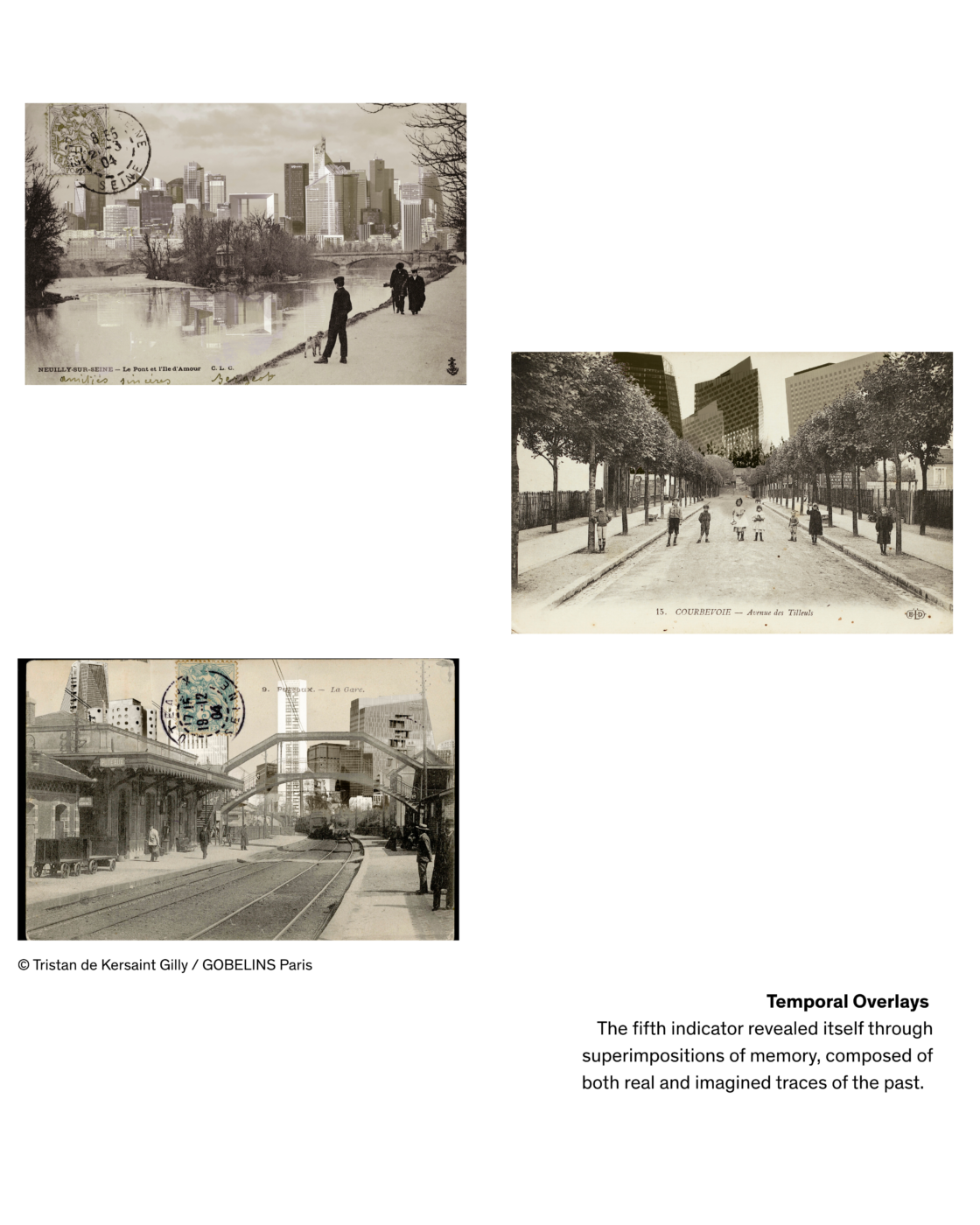
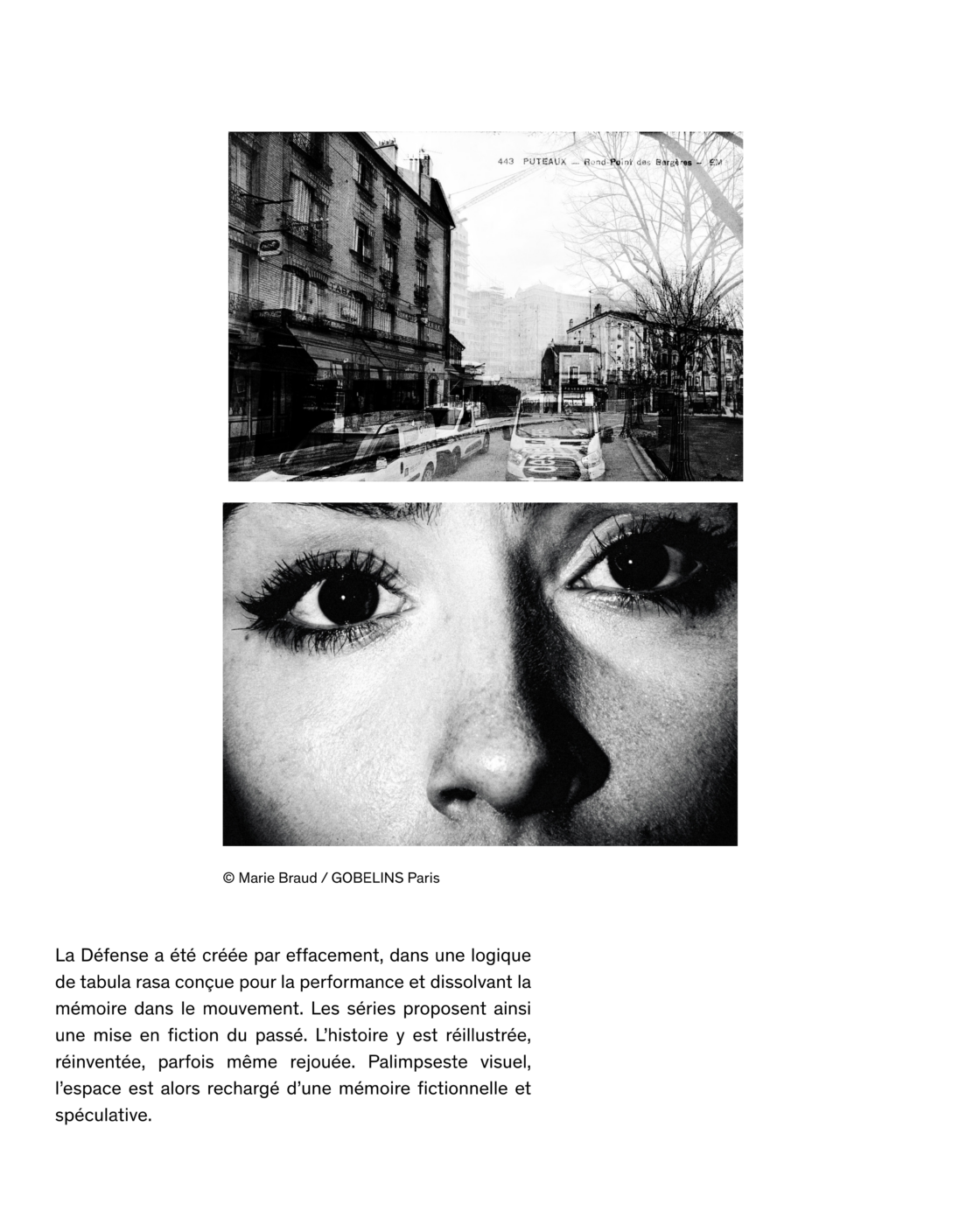
Corinne Feïss- Jehel, EPHE PSL Université, Pierre-Jérôme Jehel, GOBELINS Paris, Émilie d’Orgeix, EPHE PSL Université
